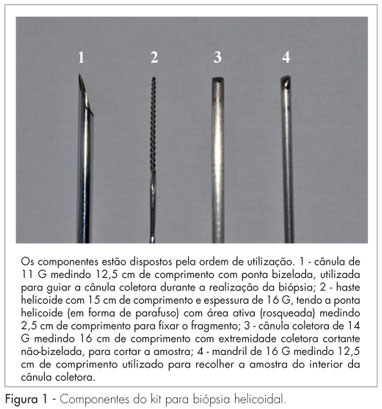You searched for:"Técia Maria de Oliveira Maranhão"
We found (12) results for your search.Summary
Rev Bras Ginecol Obstet. 2015;37(9):434-439
DOI 10.1590/SO100-720320150005368
To evaluate breast ultrasonographic features and hemodynamic indexes of the internal mammary arteries in normal pregnant women, and their correlation with the gestational periods.
Observational and cross-sectional, epidemiological, study, conducted between August 2013 and February 2015, with 93 women divided into three groups: first trimester, second trimester and third trimester. The dependent variables were thickness of the skin, of subcutaneous tissue, fibroglandular tissue, and retrommamary adipose tissue, the diameter of the ducts, as well as the pulsatility and resistance indexes of the internal mammary arteries. Independent variables were the three periods of gestation. Repeated measures ANOVA with the multiple comparison Tukey test and a test of contrasts were used for statistical analysis. The Levene test was used to test the homogeneity of variances between periods of gestation. Student's t-test was used to evaluate the difference between nulliparous and non -nulliparous women, and Pearson's correlation coefficient was used for correlation analysis between the two breasts. The level of significance was set at 5%.
Mean age was 26.6±4.6 years, with no significant difference among groups. Breast location (right/left) and gestational period had no significant effect on the thickness of the skin, of subcutaneous tissue and adipose retromammary tissue. However, the thickness of fibroglandular tissue and the diameter of the ducts showed a significant difference according to gestational period (p<0.001), i.e., from the first to the second and to the third trimesters. Doppler flowmetry of the internal mammary arteries showed a difference between breasts and between gestational periods, i.e., the measurements of the right breast were greater than those of the left, and these values decreased throughout pregnancy (p<0.001).
The average thickness of fibroglandular tissue and the diameter of the ducts showed significant differences from the first to the second and to the third trimesters, with no differences being observed between the two breasts. The pulsatility and resistance indexes of the internal mammary arteries decreased progressively throughout pregnancy.
Summary
Rev Bras Ginecol Obstet. 2010;32(12):597-601
DOI 10.1590/S0100-72032010001200006
PURPOSE: to assess the helicoid biopsy performance when carrying out breast biopsies. METHODS: thirty patients with breast cancer submitted to mastectomy were selected at random. Women with a tumor of petreous consistency, nonpalpable, submitted to previous surgical manipulation or containing fluid were excluded. The helicoid biopsy kit and a core biopsy device with a cannula and a 14-gauge-needle, respectively, were used to collect a fragment each from a healthy area and from the tumor of each surgical specimen, for a total of 120 fragments for histological study. Data were analyzed statistically by the parametric Student's t-test and by the Kappa concordance index at the 95% confidence level, using the SPSS software, version 13. RESULTS: the mean patient's age was 51.6 (±11.1) years old. The core biopsy showed 93.3% sensitivity, 100% specificity and 96.7% accuracy, and the helicoid biopsy showed 96.7% sensitivity, 100% specificity, and 98.3% accuracy. The comparison of tumor histology and biopsy fragments revealed a high degree of concordance in the diagnoses (Kappa equal to 0.9, with p<0.05). CONCLUSIONS: both methods provided a highly accurate histological diagnosis of the lesions. The results of the present study demonstrate that the helicoid biopsy is a reliable alternative for the preoperative diagnosis of breast lesions.

Summary
Rev Bras Ginecol Obstet. 2011;33(2):70-74
DOI 10.1590/S0100-72032011000200003
OBJECTIVE: to correlate complaints of stress urinary incontinence and the results of a one-hour pad test in pre- and postmenopausal women. METHODS: cross-sectional study conducted on 60 postmenopausal volunteers divided into two groups: one consisting of 34 women with involuntary loss of urine due to stress incontinence and the other consisting of 26 women without involuntary loss of urine. A control group of 15 premenopausal women with normal menstrual cycles and no urinary complaints was also used. All women underwent clinical and laboratory analysis as well as the one-hour pad test. Patients were considered to be incontinent when sanitary pad weight post-test was more than 1 g. Data were submitted to descriptive statistics, parametric ANOVA, post-hoc Tukey test and Pearson's correlation. RESULTS: all postmenopausal women presented with stress urinary incontinence during the pad test, both those with urinary loss (4 g) and with no previous loss (3.5 g). A strong correlation was observed between urinary loss and time since menopause (r=0.8; p<0.01) and body mass index (r=0.7; p=0.01). Premenopausal women were continent during the pad test (0.4 g). CONCLUSIONS: the results of the one-hour pad test showed that all postmenopausal women exhibited stress urinary incontinence, including those without urine loss on effort. Urine loss was correlated with time since menopause and body mass index.
Summary
Rev Bras Ginecol Obstet. 2012;34(2):74-79
DOI 10.1590/S0100-72032012000200006
PURPOSE: To analyze the prevalence of insulin resistance, according to different biochemical and anthropometric measurements in women with polycystic ovary syndrome. METHODS: A total of 189 patients with polycystic ovary syndrome were retrospectively analyzed. Insulin resistance diagnosis was performed using fasting insulin, HOMA-IR, QUICKI, insulin sensibility index and glucose/fasting insulin ratio. Body mass index and lipid accumulation product were used. Data were analyzed statistically by descriptive statistics, ANOVA, Tukey post-test, and Pearson's correlation. RESULTS: The polycystic ovary syndrome patients had a mean age of 24.9±5.2 and a mean body mass index of 31.8±7.6. The percentage of obese patients was 57.14%. Among the methods of insulin resistance investigation, the insulin sensibility index was the technique that most detected (56.4%) the presence of insulin resistance in women with polycystic ovary syndrome. The insulin resistance was detected in 87% of obese patients. The fasting glucose/fasting insulin ratio and insulin sensibility index were strongly correlated with lipid accumulation product. CONCLUSION: The prevalence of insulin resistance varied according to the method used, and it was greater the higher the body mass index. Lipid accumulation product was also related to insulin resistance.